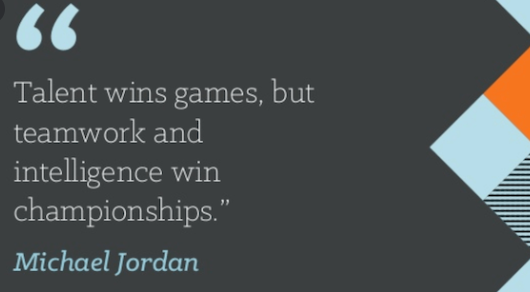Should we be judged by the way we dress? No, but we are judged on everything from our age, our intelligence, how much money we make, etc. in the first 11 seconds. First impressions do make a difference and are oftentimes hard to overcome.
In an article on 'What does business casual really mean,' I found the following.....
"Many highly intelligent, well-qualified, capable men and women are often disqualified or dismissed because 'they don't sell for what they're worth,'" Price told Business Insider. "They've left the 'business' out of 'business casual' and the lack of professional appearance holds them back. It's frustrating because clothing certainly does not determine one's actual competence and credibility; it does, however, influence others' perception of those qualities — and that reality impacts career opportunities."
80% of success is showing up, but how you show up also matters.
For many years as an image consultant, I taught these concepts. Even when I left my corporate job, I gave presentations on 'Dressing for success when interviewing for a job placement firm. Many of the people I spoke with assumed they should dress according to the job for which they were applying. Not necessary. I advised to always dress a step above the job you were applying for. For instance, if applying for a position where business casual is appropriate, an open-collared shirt with a sport coat would be more appropriate.
Being in sales and meeting with potential clients means you are constantly interviewing. Appearance does come into the equation. Whether networking or on scheduled appointments.
Here are a couple of podcasts that further define the importance of dress and appearance.
In Podcast #649, Dr. Misner discusses the 12x12x12 rule. In this article, Dr. Misner states....
You want to come across as a professional, whether you’re going to a chamber of commerce function or a big event. You want to come across as a professional, generally speaking. I try to dress at or above my audience level. But not all professions have to do that. If you’re a car mechanic, you don’t have to dress, you know, in a suit and tie. But you do want to come across, you know – khakis and a nice shirt. You want to look professional.
In Podcast #577, Meaghan Chitwood, BNI Northern Alabama Region Executive Director, recounts her experience with being 'not referable' as a business coach.
When Meaghan first joined a BNI chapter in Alabama, she’d just come out of the construction industry. Although she was now working as a business coach, she was still dressing to fit in on a construction site. She was focused on establishing credibility by knowing what she was talking about.
One day, two of her fellow BNI members came to her and said “We want to help you, because right now you’re just not referable.”
Are you referable? What does your appearance say about you? How are you showing up? It's always been my philosophy that you never know when you're going to meet your next best client or referral partner. I think sometimes BNI members take their weekly BNI meeting for granted in that these people know me, they know what I do, etc. Maybe so, but what about the visitors or members from other chapters who could be potential clients or referral partners? My advice....'Don't ever miss an opportunity to make a good first impression!'
Happy Networking,
Annette
BNI Area Director





